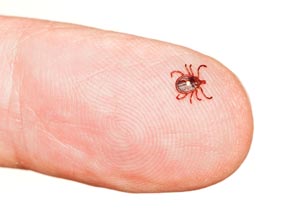Crossed words: Ticked off
ACP Internist's puzzle feature challenges readers to find clues placed horizontally in rows to reveal an answer written vertically.
Answers to clues are place horizontally in rows to reveal and answer written vertically. Unlike the familiar acrostic puzzle format, the final answer can be in any column.
Horizontal clues
1) Fancy word for hand hygiene gels
2) An intern in July, for instance
3) Opposite of “euboxic”
4) Aspirin works by making cells thus via its blockade of COX
5) Small bowel AVMs cause you to do this
6) NaHCO3, Al(OH)3, CaCO3, or Mg(OH)2, to name a few
7) Sits in the anatomic snuff box; beware avascular necrosis if fractured
8) Obesity adjective for BMI 40-45 kg/m2
9) Benign bony tumors seen in the sinuses
10) Metzenbaum, Mayo—either one will cut it
11) Pruriticest? Most pruritic?
12) OD'd on EtOH in Tokyo
Find in the vertical columns: 2 kinds of ricketsial zoonosis, and then one type of vector (3 answers). The puzzle grid is Table.
Answer
The answer grid is Table 2.
Anaplasmosis and ehrlichiosis, both transmitted by ticks, such as the lone star tick

Ehrlichiosis and anaplasmosis are 2 closely related, tickborne, emerging infectious diseases. In 2010, 1,761 cases of anaplasmosis and 740 cases of ehrlichiosis were reported to the Centers for Disease Control and Prevention. Although both diseases concentrate east of the Rocky Mountains, they usually occur in different areas. Very few cases of ehrlichiosis and no cases of anaplasmosis were reported from states west of the Continental Divide. Ehrlichiosis, or human monocytic ehrlichiosis (HME), is transmitted by the lone star tick and is found mainly in the mid-Atlantic, southeastern, and south central states. Anaplasmosis (formerly called human granulocytic ehrlichiosis, or HGE) is transmitted by the western black-legged tick and the deer tick and occurs more often in the Northeast and upper Midwest. (Source: National Institute of Allergy and Infectious Diseases)





